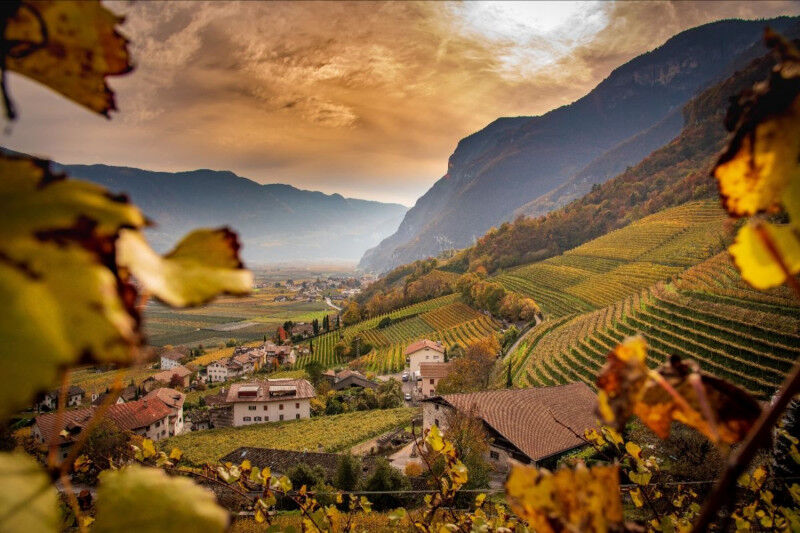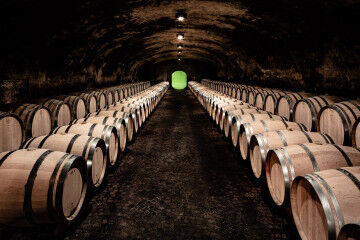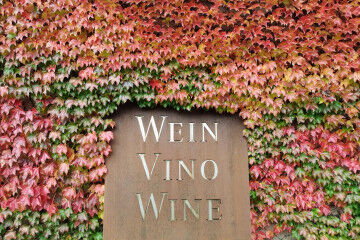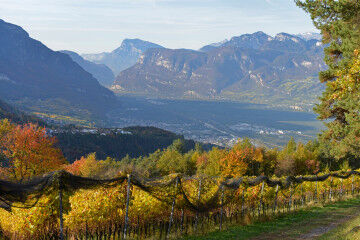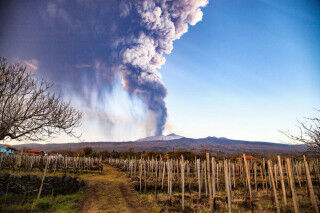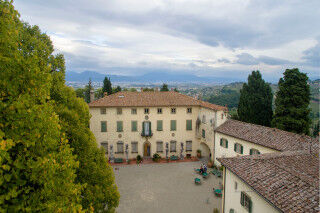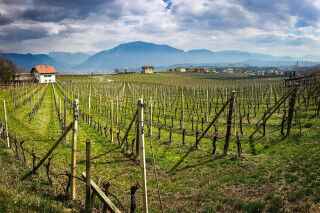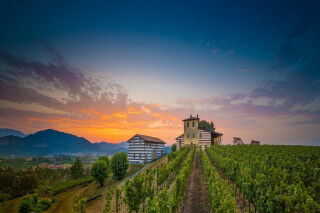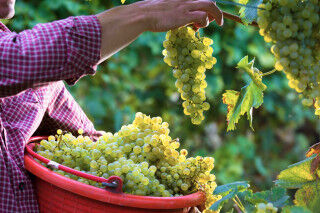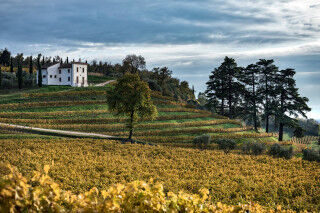SOUTH TYROL: LAND OF WINES
In South Tyrol, each vineyard running alongside the banks of the Etsch and Eisack rivers, starting from 200 to 1,000 meters (650 to 3,000 feet) above sea level and higher, has been crafted and further adapted in order to enhance specific grape varieties’ natural qualities in the over 20 different varieties present. If vineyards help in creating the area’s landscapes, often in extreme and spectacular positions, the resulting wines are a fundamental economic resource for locals, and offer the entire area a level of prestige and recognition central to Alto Adige.
Here, we find a truly golden earth, where all the local flora whispers (and not just the vines), where the looming Mountains act as guardians and queens over the land, making each hill precious beyond human value. Volcanic porphyry, metamorphic quartz, mica rock, and Dolomitic limestone: this is the composition of the area, and represents the soil’s multiplicity, resulting in a varied and complex terroir with inherent variations notable even within a few meters, from vineyard to vineyard.
Alto Adige, locally known as Südtirol, is home to more than 5,000 wine-growers and just as many hectares of vineyards. Here, local viticulture reaches levels of absolute excellence, and establishing its solid reputation in the collective imagination as an oenological region producing wines of guaranteed overall quality for every grape varietal employed.
This principle appears most notably among white wines, which represent just under 60% of the total viticultural area. This reputation is due to the area’s perfectly organized sector, which cohesively works together to promote its wines, as well as creating labels and wine selection with reliable stylistic consistency.
Competence, research and absolute sincerity, sometimes exaggerated, are followed in such a methodic, efficient manner that the area possibly presents a virtuous wine-making model others might desire to follow.
QUALITY WITHOUT COMPROMISE
Surpassing even the most stringent standards of merit, the Alto Adige area wineries are today formed by tenacious, independent vignerons, living symbols of artisanal excellence, or by thriving cooperatives each with renowned local histories, and occasionally sustained with the assistance of local, large family wineries.
The wineries have opted to focus, for several years, on greater sustainability. This includes environmental impact education for winery employees, associates and anyone affiliated with the wineries. The training programs often include a focus on organic, biodynamic, or sometimes natural wine management.
As expert Hugh Johnson says, "wine can be a beverage or a pastime, it depends on the attitude you take towards it. As a beverage it should be refreshing, tasty and not too intrusive.” The common belief is that by showing a certain appreciation for a drinkable wine as much for a full-bodied, fruity and alcoholic one, the philosophy of the South Tyrolean winegrowers can be brought closer to its “dogma.”
A WIDE VARIETY OF WHITE WINES
In Bassa Altesina, the Gewürztraminer vine dominates the vineyards, growing in the cypress trees’ shadows, and gleaning elegance and aromaticity from these arboreal neighbors. In the Oltradige, a wine idyll nestled between castles and historic residences, Pinot Grigio and Sauvignon Blanc show structure and a certain grape-flesh maturity.
In the Adige Valley, where minerality reigns supreme, Chardonnay is able to succinctly express all of its proverbial complexity. Heading over to the Isarco Valley, where local viticulture is firmly rooted in the Alpine landscape, Sylvaner, Kerner, Veltliner, and Riesling impress us with their flavor and depth of aroma. Continuing our exploration, we arrive in the Vinschgau Valley, the land of apples, where Müller Thurgau often conveys unique liveliness and freshness.
We can dedicate an entire separate chapter to Pinot Blanc. This varietal behaves in the areas mentioned above and beyond, in a more chameleon-like, adaptable way. Extremely crisp in Val Venosta; saline and slender on the red porphyry of Terlano; tonic and powerful between Sirmiano and Appiano; juicy and fruity at Cortaccia; slightly rounded and soft at Magrè. In every instance, however, Pinot Blanc represents an authentic example of gustatory delicacy.
Lastly, we couldn’t possibly overlook the blends of white grapes, referred to in the past as “Strahler.” Over the last few decades, these blends have become more important, asserting their presence particularly in a range of prestigious local wines.
Be sure to check out Lele Gobbi's additional articles focusing on the fabulous wine regions throughout Italy. For a complete Blog Index, check out Mamablip's full offerings here.
Don't forget to register for Mamablip's weekly newsletter for updates on all the exciting newest Mamablip Blog articles, recipes and other wine news from Italy.
